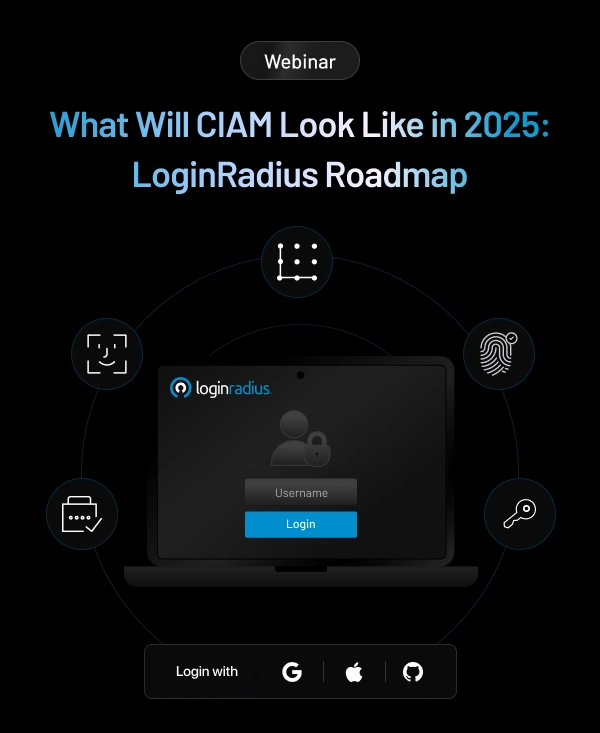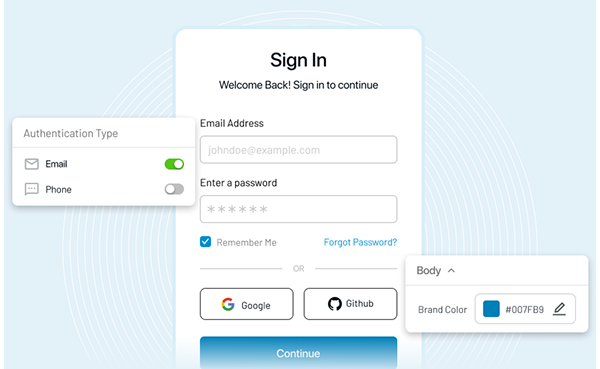Introduction
We all have gone through proving our identity somehow, and many of us won’t understand its importance.
Imagine you’re about to book a hotel in another state, and you go to the counter, show your identity verification documents like passport or identity card, and take the keys to your room.
This is what identity proofing is. The process of verifying an individual’s identity whether it matches their claimed identity or not. It’s quite a simple process. Isn’t it?
However, things aren’t that easy as they might seem, especially when it comes to digital identities.
As per stats, around 3.4 million identities were compromised to a breach in 2019, which is pretty problematic.
So, does it mean that cybercriminals are exploiting certain loopholes in the current identity verification system?
Unfortunately, yes.
Let’s understand how identity verification works in the digital era and uncover various digital identity verification methods.
What is Identity Verification?
Identity verification is a necessary process that ensures an individual’s identity matches the one that is supposed to be.
The identity verification process involves comparing the set of unique characteristics and traits associated with an individual with the one claiming the same.
Identity verification is essential to ensure an actual individual is behind a process and prevent fraud through authentication and authorization.
Whether online or offline, identity verification is an essential requirement for most procedures and processes, including online/offline banking, booking flights, or applying for a passport.
What is Digital Identity Verification?
Digital identity implies how you are represented and digitally documented online, sometimes through social login, work email address, or personal email ID.
In a nutshell, it's a process that validates a person's identifying characteristics or traits and verifies they really are who they claim to be by leveraging computer technology.
Why Verification for Digital Identity Became Necessary?
Since technology has helped us perform complex tasks like a breeze, the associated cybersecurity threats can’t be overlooked.
Every year, millions of people compromise their identities since cybercriminals are always on a hunt for frail networks that can be easily bypassed. This means weak authentication or a loophole in the overall identity management system can be fatal for an organization.
Hackers are able to impersonate users within a network and gain access to sensitive business information, which is further exploited for diverse purposes.
Hence a more robust line of defense is becoming the need of the hour in the form of digital identity verification as organizations have to face financial losses worth millions along with brand tarnishing just because of an increasing number of identity thefts.
Digital Identity Verification Use Cases
Digital identity verification serves a multitude of purposes across various sectors. Here are some common use cases:
- Financial Services: Banks and financial institutions use digital identity verification to authenticate customers for account openings, loans, and transactions.
- Healthcare: Healthcare providers verify patient identities for telemedicine appointments, prescription refills, and accessing medical records.
- E-Commerce: Online retailers use identity verification to prevent fraud in purchases, especially for high-value items.
- Travel and Hospitality: Airlines and hotels verify identities for booking tickets and check-ins, enhancing security and preventing identity theft.
- Government Services: Government agencies use digital identity verification for citizen services like tax filings, voting, and license renewals.
How to Analyze Digital Identity Verification Solutions
When evaluating digital identity verification solutions, consider the following factors:
- Security Features: Look for solutions with robust encryption, multi-factor authentication (MFA), and biometric verification for enhanced security.
- User Experience: A seamless user experience is crucial. Ensure the solution offers easy integration, smooth onboarding, and minimal friction for users.
- Compliance: Verify that the solution complies with industry standards and regulations such as GDPR, HIPAA, and PCI-DSS.
- Scalability: Choose a solution that can scale with your business growth, accommodating increasing user volumes and diverse verification needs.
- Cost-effectiveness: Evaluate the pricing structure, considering factors like transaction volume, support costs, and implementation expenses.
How is Digital Identity Verification Different from Authentication?
While digital identity verification and authentication are closely related, they serve distinct purposes:
- Identity Verification: Verifies the user's identity against a trusted source, ensuring they are who they claim to be. It involves validating personal information and documents.
- Authentication: Confirms a user's identity during access attempts. It typically involves verifying credentials (username, password) or using additional factors like biometrics or one-time passwords (OTP).
In essence, identity verification establishes trust in the user's identity, while authentication grants access based on that verified identity.
What are the Benefits of Digital Identity Verification?
When it comes to the advantages of digital identity verification, the list is endless. Here are some of the benefits associated with digital identity verification:
1. Robust Security
Adding multiple layers of authentication to your current network through multi-factor authentication (MFA) can help enhance overall security.
MFA is considered the most reliable way to authenticate users that prevents unauthorized access and eventually helps to comply with specific industry regulations.
For example, PCI-DSS requires MFA to be implemented in certain situations to prevent unauthorized users from accessing systems. So, even when application updates lead to unknown and unattended consequences, MFA compliance ensures that it remains virtually non-intrusive.
2. Mitigates the Risks Associated with Human Verification Measures
The traditional methods for verifying an identity solely rely on human verification measures that include comparing a person’s picture on a government-issued identity with the ones asking to avail certain services (online/offline).
These measures are widely used to judge the identity, whether it’s fake or genuine.
However, unauthorized professionals can easily bypass these verification processes by altering the documents through several free tools available in the market.
Using a reliable identity verification system reduces human judgment-related risks and mitigates human error in verifying an individual’s identity.
3. Improves Customer Experience
Customer experience is everything, and if it’s reinforced with the highest level of security, it’s the game-changer for any enterprise or public sector service provider.
The cutting-edge identity verification system offered by LoginRadius offers user-friendly experiences for potential customers right from the onboarding stage and during the entire consumer life cycle.
The robust CIAM (consumer identity and access management) solution by LoginRadius enables secure authentication and adds multiple layers of authentication through multi-factor authentication and adaptive authentication (risk-based authentication).
Customers can quickly verify their identity either through their social media accounts or through a one-time password (OTP), which enhances the overall user experience.
How does the Identity Verification Process Work?
The identity verification process through the identity and access management system works by performing three main tasks viz. identification, authentication, and authorization.
In other words, a CIAM solution functions to provide the right people access to devices, hardware, software applications, or any IT tool to perform a specific task.
The CIAM includes the following core components:
- A database that includes the identities and access rights of users and consumers
- CIAM tools to provision, monitor, change and remove access privileges
- A framework for auditing login and access history
The list of access rights must be up-to-date all the time with the entry of new users or the change of roles of current users.
The responsibilities of identity and access management typically come under IT or departments that handle data processing and cybersecurity.
Types of Identity Verification Methods
Identity verification is the necessary implementation for secure and genuine access to resources of web and mobile applications. It helps to authorize the user and provide access control for applications based on the user’s credentials.
Here are some ways through which identities of consumers can be verified:
- Email Verification: Email is still considered the primary means of authentication because other mechanisms are not as optimized or approach everyone. So it is safe to say that most of your application users use their Gmail accounts for creating their new accounts. The credentials used in setting up the email verification can be used to sign in to an account.
- Biometric Verification: Biometrics are physical characteristics and traits of an individual that are unique to them. These characteristics can be used for authentication purposes. Most common biometric authentication characteristics include fingerprints, iris, face, and voice.
-
Phone Verification: With phone verification, customers use their telephone numbers to identify themselves. This process occurs in three simple steps.
- The customer fills out the registration form with their phone number, later acting as the username.
- LoginRadius sends a temporary one-time passcode (OTP) registration via an SMS message or automated call.
- The customer verifies their phone number by entering the OTP on the website or mobile app.
-
Social Verification: Social login/verification enables users to use existing login credentials from a social networking platform, including Facebook, Google, Twitter, and more, allowing simplified logins and registrations. LoginRadius simplifies social authentication and improves the overall user experience.
Our social authentication solution flawlessly combines the APIs of over 40 social networks that create a unified social API fully equipped to handle all the specific features of these platforms.
Identity Verification Regulations and Standards
Several countries have different standards and regulations for identity verification, which service providers should consider before serving the citizens of that particular country.
If you’re relying on a CIAM solution like LoginRadius, you need not worry about identity verification regulations and standards.
The LoginRadius Identity Platform is designed to comply with all significant data security and privacy laws and with the terms of various social networks. Our legal team constantly monitors changes in the laws, and we perform regular security audits to ensure that our compliance is always up to date.
The LoginRadius Identity Platform is designed to handle consent management and ensure continued compliance with all major privacy regulations, including the EU’s GDPR and California’s CCPA.
Final Thoughts
Organizations that aren’t able to earn consumers’ trust gradually end up losing business. This is perhaps the reason why stringent authentication practices should be in place.
Since cybercriminals easily exploit inadequate identity verification systems, the end result is compromised consumer identity and brand tarnishing.
Businesses need to consider relying on a robust CIAM solution that helps in securely verifying user identities without hampering user experience.
LoginRadius’ cutting-edge CIAM can be the ultimate choice for preserving crucial consumer data and offering a robust authentication mechanism backed with a great user experience.
FAQs
1. What is digital ID verification?
Digital ID verification is the process of confirming a person's identity online using digital methods.
2. How do you digitally verify your identity?
Digitally verifying your identity typically involves providing specific information or documents through an online platform, such as uploading a photo of your government-issued ID or answering security questions.
3. What is digital identity verification with example?
Digital identity verification is used in various industries like finance and healthcare. An example would be opening a bank account online, where the bank verifies your identity using the information and documents you provide.
4. What is virtual identity verification?
Virtual identity verification is the process of verifying an individual's identity through digital channels without physical presence, often using methods like video calls or AI analysis of facial features or voice patterns.
















